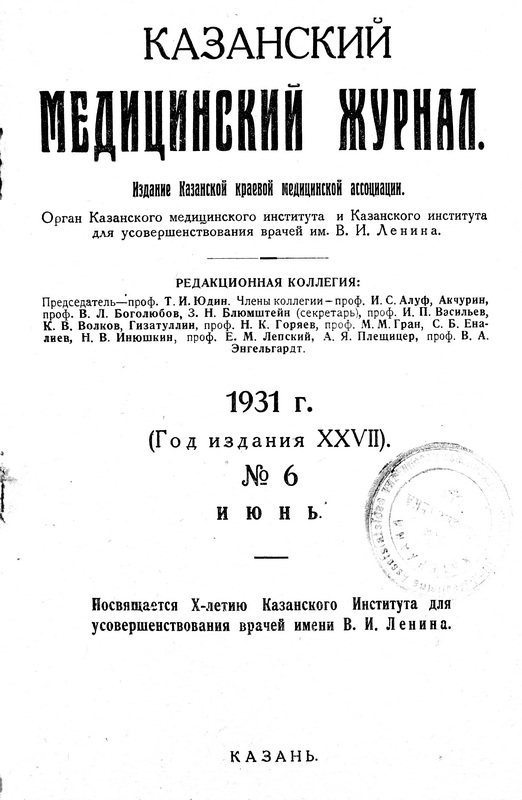The reaction of human skin to the introduction of foreign serum and the diagnostic value of this reaction
- Authors: Agafonov A.F.1,2,3
-
Affiliations:
- regional Microbiological Institute of the Tatnarkomzdrav
- Kazan state. Medical Institute
- State Institute for Advanced Training of Doctors named after V. I. Lenin
- Issue: Vol 27, No 6 (1931)
- Pages: 574-579
- Section: Articles
- URL: https://bakhtiniada.ru/kazanmedj/article/view/83163
- DOI: https://doi.org/10.17816/kazmj83163
- ID: 83163
Cite item
Full Text
Abstract
The method of intradermal administration of one or another antigen for diagnostic purposes is widely used in a wide variety of painful conditions of the human body. According to the reaction of the skin as a tissue to one or another antigen, they try to judge the immunobiological state of the whole organism in relation to the tested anti-gene. The so-called "skin tests", their loss, the very mechanism of skin reactions to various stimuli, of course, will be completely different depending on the properties of the antigen and the reaction of the body to it. One has to be very careful in interpreting intradermal reactions, taking into account, among other things, the fact that most drugs used for diagnostic purposes do not represent homogeneous antigens. According to their chemical and biological properties, these diagnostic drugs can be divided into two large main groups: 1) for toxins and 2) for proteins-animal, vegetable or bacterial origin- primarily atoxic or with negligible toxicity. The mechanism of skin reactions, their essence will be completely different in both groups. How simple and clear is the essence of the reaction to toxins, which is closely related to the presence or absence of antitoxic immunity, so the interpretation of the reaction of the second group is not entirely clear and difficult: in all likelihood, here we are talking about an allergic reaction—anaphylaxis. Very often used for diagnostic purposes, the drug contains both ingredients. In such cases, the "reading" of reactions is extremely difficult, the answers to both times are layered on top of each other and are often diametrically opposed (Szirmau).
Keywords
Full Text
##article.viewOnOriginalSite##About the authors
A. F. Agafonov
regional Microbiological Institute of the Tatnarkomzdrav; Kazan state. Medical Institute; State Institute for Advanced Training of Doctors named after V. I. Lenin
Author for correspondence.
Email: info@eco-vector.com
Professor, Department of Microbiology, Infectious Diseases Clinic
Russian Federation, Kazan; Kazan; KazanReferences
Supplementary files





